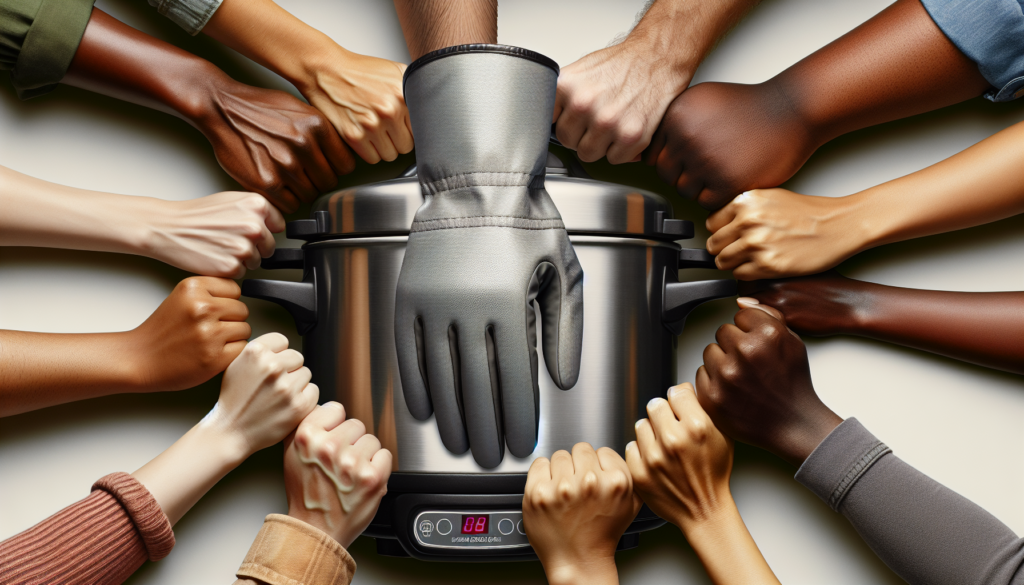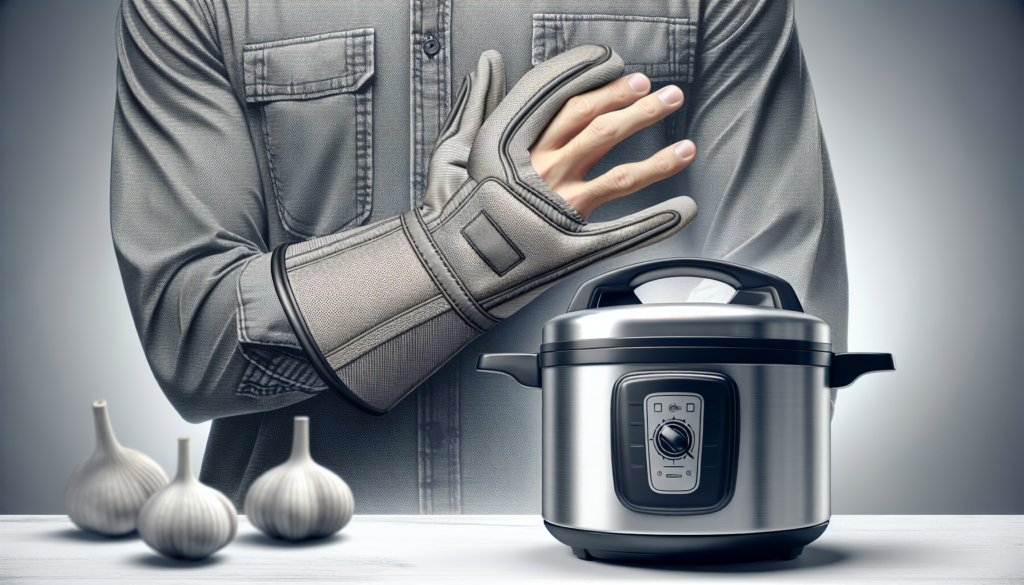
If you’ve recently purchased a pressure cooker or Instant Pot, you may be wondering how to use it safely and effectively. In this article, we’ll provide you with five essential safety tips that will help you make the most out of your cooking experience. Whether you’re a beginner or an experienced cook, these tips will ensure that you can confidently whip up delicious meals without any worries. So, let’s dive into the world of pressure cooking and Instant Pot magic while keeping safety in mind!
Choosing a Safe Pressure Cooker or Instant Pot
When it comes to choosing a pressure cooker or Instant Pot, safety should always be the top priority. Look for models that come with various safety features to minimize the risk of accidents. Safety features such as locking lids, pressure release valves, and pressure indicators can provide peace of mind while cooking. These features are designed to ensure that the pressure cooker operates safely and efficiently.
Another important factor to consider is the certification labels. Look for pressure cookers that have been certified by reputable organizations to meet specific safety standards. Certification labels such as the UL (Underwriters Laboratories) mark or the CSA (Canadian Standards Association) mark indicate that the product has undergone rigorous testing and meets safety requirements. Choosing a certified pressure cooker can give you confidence in its safety and reliability.
It is also important to avoid buying used or damaged pressure cookers. While it may be tempting to purchase a second-hand unit to save money, there could be hidden safety risks associated with it. Used pressure cookers may have worn-out parts or damaged components, which can compromise their safety. Always opt for a brand new pressure cooker to ensure that you are getting a product in optimal condition.
Understanding the User Manual
Once you have chosen a safe pressure cooker or Instant Pot, it is vital to thoroughly read the user manual before using it. Many accidents and mishaps can be avoided by following the instructions provided in the manual. Familiarize yourself with all the parts of the cooker and understand their functions. This will help you operate the pressure cooker correctly and prevent any potential dangers.
The user manual also contains important information about recommended usage and settings. Each pressure cooker has specific guidelines on how it should be used, including the amount of liquid required for pressure buildup and the recommended cooking times. Pay close attention to these instructions as they are essential for the safe and successful operation of the pressure cooker.

Inspecting the Pressure Cooker or Instant Pot
Before using your pressure cooker or Instant Pot, it is crucial to inspect it for any damages or issues. Start by checking the sealing ring, which is essential for creating an airtight seal. Look for any cracks or damage in the sealing ring, as this can affect the cooker’s performance and safety. A damaged sealing ring should be replaced immediately.
Next, examine the pressure release valve. This valve is responsible for regulating the pressure inside the cooker. Ensure that the pressure release valve moves freely and is not clogged or obstructed. A faulty pressure release valve can lead to excessive pressure buildup, increasing the risk of accidents. If you notice any issues with the valve, contact the manufacturer for assistance.
Inspect the lid and its components for any problems. The lid should fit securely onto the pressure cooker and should not be damaged or bent. Check the handles and locks to ensure they are in proper working condition. It is essential that the lid is firmly locked during cooking to prevent steam from escaping and to maintain a safe pressure level inside the cooker.
Properly Using and Filling the Cooker
When using a pressure cooker or Instant Pot, it is crucial to follow the recommended guidelines for filling and usage. Overfilling the cooker can result in food splattering and clogging the pressure release valve, which can lead to dangerous pressure buildup. Always leave enough space in the cooker for the food to expand and generate steam.
Using an adequate amount of liquid is also essential for proper pressure buildup. The liquid creates steam, which builds pressure inside the cooker. Insufficient liquid can cause the pressure cooker to run dry, which can damage the cooker and pose safety risks. Always refer to the recommended liquid amount specified in the user manual for each recipe.
Additionally, it is important to follow the recommended cooking times and instructions provided by the manufacturer. Each pressure cooker has specific settings and cooking times for different types of food. Following these guidelines helps ensure that the food is cooked thoroughly and eliminates the risk of undercooking or overcooking.

Handling and Releasing Pressure Safely
Properly handling and releasing pressure is a critical aspect of using a pressure cooker or Instant Pot safely. Always follow the instructions provided in the user manual for releasing pressure. Different models may have different methods, such as natural release or quick release. It is important to release pressure according to the specified method to avoid accidents and injuries.
When manually releasing pressure, use caution and protect your hands from the hot steam. Avoid placing your face or body directly over the pressure release valve when opening it, as this can cause burns. Use a long utensil or oven mitts to turn the valve and release the pressure safely. Never force open a pressurized pressure cooker, as this can be extremely dangerous.
Avoiding Common Mistakes and Risks
To ensure the safest possible experience with a pressure cooker or Instant Pot, it is important to avoid common mistakes and risks. One of the most important safety tips is to never leave the pressure cooker unattended while it is in use. It is crucial to keep an eye on the cooker to prevent any potential accidents or mishaps. Stay nearby and be prepared to take necessary action if needed.
Another common mistake to avoid is opening the lid while the pressure cooker is still under pressure. The high pressure inside the cooker can cause the hot contents to forcefully splatter out, resulting in burns and other injuries. Always wait for the pressure to release completely and for the pressure indicator to drop before attempting to open the lid.
Lastly, refrain from using excessive force when closing the lid. The lid should be closed firmly but not overly tightened. Applying excessive force can damage the cooker’s components and compromise its safety. Follow the manufacturer’s instructions for securing the lid properly, ensuring a safe and secure cooking environment.

Keeping Children and Pets Safe
When using a pressure cooker or Instant Pot, it is crucial to keep children and pets away from the cooking area. Pressure cookers can be very hot during and after use, posing a burn risk to curious children and pets. Always keep the pressure cooker out of their reach to prevent accidents.
Additionally, it is essential to educate children about the dangers of pressure cookers and explain that they should never touch or operate the cooker without adult supervision. Teaching them about the potential risks associated with pressure cookers can help establish a safe cooking environment for everyone in the household.
Cleaning and Maintenance
Proper cleaning and maintenance of your pressure cooker or Instant Pot play a significant role in its longevity and safety. It is important to follow the recommended cleaning instructions provided by the manufacturer. Most pressure cookers have removable parts that can be washed separately, such as the sealing ring and the pressure release valve. Clean these parts thoroughly to ensure any food residue is removed.
Regularly check and replace worn-out parts to maintain the pressure cooker’s safety and efficiency. Sealing rings and gaskets can wear out over time, compromising their ability to create a proper seal. Replace these parts as recommended by the manufacturer to ensure optimal performance. Properly storing the pressure cooker when it is not in use is also essential in maintaining its safety and longevity.

Troubleshooting Common Issues
In case you encounter any issues with your pressure cooker or Instant Pot, it is important to know how to troubleshoot common problems. If you notice leaks or steam escaping from the cooker, it could be an indication of a faulty sealing ring or a damaged component. Check the sealing ring and other parts for any signs of damage and replace them if necessary.
Food sticking or burning can also be a common problem when using a pressure cooker. To prevent this, make sure to follow the recommended cooking times and instructions. If you are experiencing persistent issues with food sticking or burning, contact the manufacturer for assistance or consider adjusting the cooking technique or recipe.
For major malfunctions or issues beyond your understanding, seeking professional help is crucial. Do not attempt to repair or disassemble the pressure cooker yourself if you are unsure of what to do. Contact the manufacturer’s customer service or consult a professional technician who specializes in pressure cooker repairs to ensure your safety.
Additional Safety Precautions
Aside from the aforementioned tips, there are additional safety precautions to keep in mind when using a pressure cooker or Instant Pot. Firstly, keep flammable materials, such as paper towels and curtains, away from the cooking area. Pressure cookers generate heat and steam, so it is important to maintain a safe distance from anything that can catch fire.
Secondly, always use the pressure cooker on a stable and heat-resistant surface. Avoid placing it on surfaces that may be prone to tipping over or that can be damaged by heat. A stable and secure surface ensures that the pressure cooker remains upright and minimizes the risk of accidents.
Lastly, be cautious of the hot steam and escaping pressure when operating the pressure cooker. Take extra care when handling the cooker and avoid placing your hands or body in direct contact with the steam. Use oven mitts or heat-resistant gloves to protect your hands from burns.
By following these safety precautions and guidelines, you can ensure a safe and enjoyable cooking experience with your pressure cooker or Instant Pot. Prioritizing safety will not only protect you from accidents but also enhance the overall performance and lifespan of your appliance. Happy and safe cooking!







